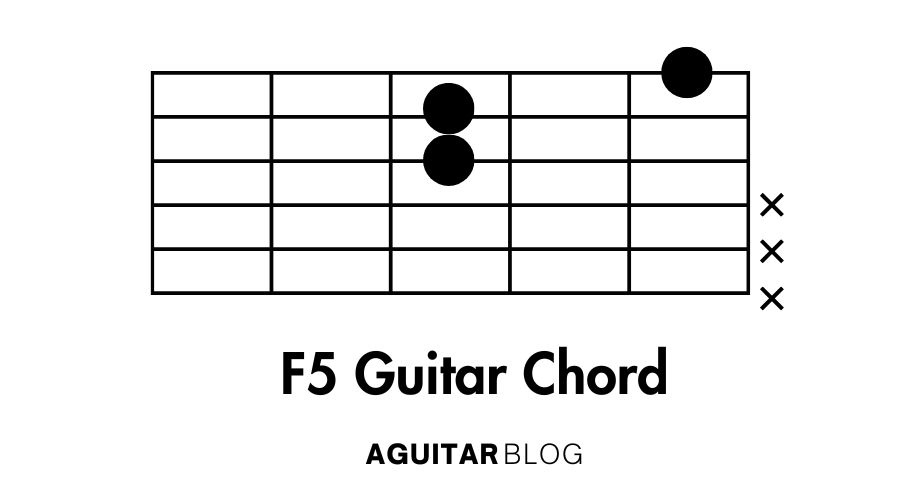Learn how to play the F5 guitar chord with this beginner-friendly guide. Includes step-by-step instructions, variations, tips, and common progressions featuring the F5 power chord for rock and metal guitarists.
What is an F5 Guitar Chord?
The F5 chord, commonly known as the F power chord, is a simple and powerful chord often used in rock, metal, and punk music. It’s neither major nor minor, as it only includes the root note (F) and the fifth (C), making it neutral and versatile.
The notes in the F5 chord are:
- F (Root)
- C (Perfect Fifth)
How to Play the F5 Guitar Chord

Most Common F5 Shape (Root on 6th String):
- Place your index finger on the 1st fret of the low E string (F note).
- Place your ring finger on the 3rd fret of the A string (C note).
- Strum only the low E and A strings.
Alternative F5 Shape (Root on 5th String):
- Place your index finger on the 8th fret of the A string (F note).
- Place your ring finger on the 10th fret of the D string (C note).
- Strum only the A and D strings.
Full F5 Power Chord:
- Add your pinky finger on the 3rd fret of the D string (F note) for a fuller sound.
- Strum the low E, A, and D strings.
Video Tutorial
Watch a step-by-step video tutorial demonstrating the F5 chord, including variations and tips for clean playing.
Common Mistakes and Tips for Playing the F5 Guitar Chord
Common Mistakes:
- Strumming Extra Strings: Avoid playing strings that aren’t part of the chord.
- Weak Pressing: Not pressing firmly on the frets can result in muted or buzzing notes.
- Incorrect Finger Position: Placing fingers too far from the fret can cause unclear sound.
Tips for Success:
- Use the Side of Your Index Finger: Helps mute adjacent strings for cleaner playing.
- Practice with Downstrokes: Start by strumming the F5 chord with powerful downstrokes for that classic rock sound.
- Play Slowly at First: Gradually build speed while maintaining accuracy.
Variations of the F5 Guitar Chord
- F5 (Octave Variation): Add the 8th fret of the A string to include the octave (F note).
- F5 Drop D Tuning: In drop D tuning, the F5 can be played with a single finger by barring the 3rd fret on the low E and A strings.
- F5 with Open Strings: Use the open D and G strings for an experimental sound.
Chord Progressions and Songs Featuring the F5 Guitar Chord
Common Chord Progressions:
- F5 – G5 – A5: A classic power chord progression used in rock and punk.
- F5 – C5 – Bb5: Perfect for blues-inspired riffs.
- F5 – D5 – Eb5: Creates tension and release, ideal for metal riffs.
Songs Featuring the F5 Chord:
- “Smells Like Teen Spirit” by Nirvana: Features heavy use of power chords like F5.
- “Iron Man” by Black Sabbath: An iconic example of power chord-driven riffing.
- “American Idiot” by Green Day: Punk rock rhythm utilizing F5 and similar shapes.
Tips for Practicing the F5 Guitar Chord
- Focus on Muting: Use your fretting hand to mute strings you don’t want to hear.
- Use a Metronome: Build timing and rhythm by practicing chord changes with a metronome.
- Experiment with Distortion: Power chords like F5 shine when played with an overdriven or distorted tone.
Related Chords to the F5 Guitar Chord
- F Major (F): Add the third (A) for a complete major chord.
- F Minor (Fm): Use Ab instead of A for a minor feel.
- F7: Add an Eb to create a dominant seventh sound.
- C5: A perfect companion chord for F5 in many progressions.
The F5 guitar chord is a must-know for any guitarist interested in power chord-driven genres. Mastering this chord will unlock countless riffs and progressions, making it an essential tool in your guitar arsenal. Grab your guitar, and start rocking!
